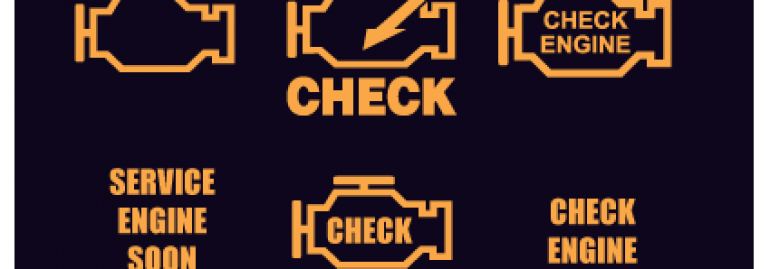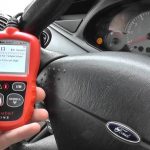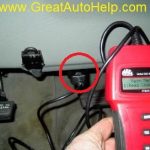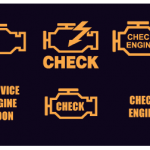Automotive DTC codes, also known as fault codes, are short, four or five-character symbols that indicate problems with a car’s electrical system. The first character is always a letter, which indicates the type of system. The second character is either “0” or “1” while the third character is a single-digit number. The reason that DTC codes are so important is that they indicate a potential problem.
OBD-II Diagnostic Trouble Codes
OBD-II Diagnostic Trouble Codes (DTC) are five-character sequences indicating malfunctioning systems in vehicles. Typically, these codes are produced by a vehicle’s on-board computer management system. When a vehicle’s computer detects a problem, it stores the diagnostic trouble code and then turns on the warning lights on the dashboard. Some modern vehicles produce hundreds of DTCs. In order to determine which one your vehicle is displaying, you must first understand how OBD-II codes are generated.
OBD-II provides easy access to engine control unit data and provides a useful resource for troubleshooting. The standard, called SAE J1979, specifies the procedure for reading diagnostic data. It also identifies standard parameters by their PIDs. However, manufacturers are not required to implement all PIDs. They may include proprietary PIDs as well. OBD-II diagnostic trouble codes can help your mechanic determine what’s wrong with your vehicle.
DTCs are informational messages generated by a vehicle’s computer. They help a car owner understand what’s wrong with their vehicle. To read the information contained in these codes, you must use a code reader or professional OBD-II software to diagnose the problem. These tools are a must-have for any automotive technician. And, they can save your life. So, how do you interpret DTCs? Read on to find out.
OBD-II Diagnostic Trouble Codes are a vital tool for auto repair technicians and mechanics. They can identify problems that can be caused by various malfunctions. The OBD-II port is usually located beneath the dashboard or steering wheel column. You can also find it in areas four and nine of the vehicle. Using a code reader can identify the specific problem, and fix it in minutes.
OBD-II Diagnostic Trouble Codes are classified by their purpose. In general, the first letter of an OBD-II code refers to the powertrain. It includes the engine, transmission, and associated accessories. The second letter, U, refers to the vehicle’s network and onboard computer systems. The third category is the chassis. It covers the mechanical system and can be ‘0’, ‘1,’ or ‘1.’
P0xxx codes are for auxiliary emission controls
Automotive DTC codes are used by the manufacturer to identify malfunctioning parts of your vehicle. They can be classified into two categories: standard type and non-standard type. Standard type codes have five fields: a letter and four hexadecimal characters. The non-standard type code contains only one field: a letter. A subsystem failure requires two warm-up cycles.
A P0xxx code can indicate a variety of different issues with the vehicle’s emission control system. A P0133 code means that the O2 sensor is unable to adjust the air-fuel ratio. A low voltage condition in bank 1 sensor 2 can cause this code to be displayed. Another code is P0137, which indicates that a heated O2 sensor is triggering a PCM warning.
All vehicles built since 1996 use OBD II. There are two different types of automotive dtc codes: Type 1 obd code (MIL) and Type 2 obd code (TCF). The former is the more serious and immediate problem, while the latter is less significant but still critical. The MIL illuminates if the drive fails. The latter creates a trouble code freeze frame and is not as serious.
P1xxx codes are for fuel or air metering problems
The first two characters of P1xxx automotive dtc codes are the manufacturer-specific and generic codes for powertrain and emissions problems. The third character indicates the system where the fault occurred. A vehicle with a “1” in its code has a fuel or air metering issue. The code will also display a mass air flow sensor fault if it is in the transmission.
In order to troubleshoot a particular DTC, the first step is to learn about its meaning. This error code is usually associated with a Monitor. To identify which Monitor has this particular fault, refer to the vehicle’s service manual or the manufacturer’s procedures for performing a Trip Drive Cycle. If you cannot recall a specific Monitor, use the “code” icon to identify it.
A malfunction indicator lamp (MIL) illuminates when an emissions-related fault occurs. Some manufacturers still refer to this lamp as a check engine light or service engine soon light. Automotive DTCs for these problems are classified as Type “A” or Type “B” codes. The first type is a one-trip code; the second is a two-trip code. In the case of a failure that occurs during a warm-up cycle, the computer commands the MIL to be “On”.
When you see a red LED next to a P1xx automotive DTC, you’ll know that a problem has been detected. In addition to this, the Malfunction Indicator lamp will illuminate if the code is present. In addition to malfunctioning fuel or air metering systems, P1xx automotive DTC codes are also for fuel or air metering problems. These are the most common types of fault codes. If you do not know what they mean, consult a mechanic to diagnose the problem.
A good diagnostic tool will be able to detect this type of trouble code and repair the issue. A good scanner will show you the history of the codes. If you find a code for a specific problem, a technician can easily repair it. In some cases, you can even test the vehicle yourself to determine whether it has any issues. There are also software tools that can help you identify and remove the DTC.
P0xxx codes are for computer or output circuit faults
The P0xxx automotive dtc code refers to a fault with the engine or transmission. Other codes may be associated with other systems, including the fuel and air metering systems, the injector circuit, and the vehicle speed control systems. Identifying the cause of a fault can help prevent it or save you a trip to the mechanic.
Trouble codes are recorded by the on-board computer diagnostic system in response to a malfunction in the car. When a sensor reading is outside of its normal range, a trouble code will be stored. Trouble codes are intended to direct the technician to the exact location of the fault. Some P0xxx automotive DTC codes are temporary, while others are permanent. However, it’s important to understand the meaning of each trouble code.
The P0xxx automotive dtc codes are a warning that something is wrong with the engine. Oftentimes, these codes are caused by a misfire, such as a muddled MAF sensor. Using an OBD 2 scanner, however, can help you understand what’s wrong with your car and fix it right away.
The P0xxx automotive dtc code refers to a problem with the computer or the engine’s transmission. Usually, the code will tell the driver that the transmission is having a problem. Using this code, he can scan the engine’s TCU to determine which part has a problem. These fault codes can be confusing and difficult to understand. Fortunately, there are many online resources that can help you interpret these codes.





